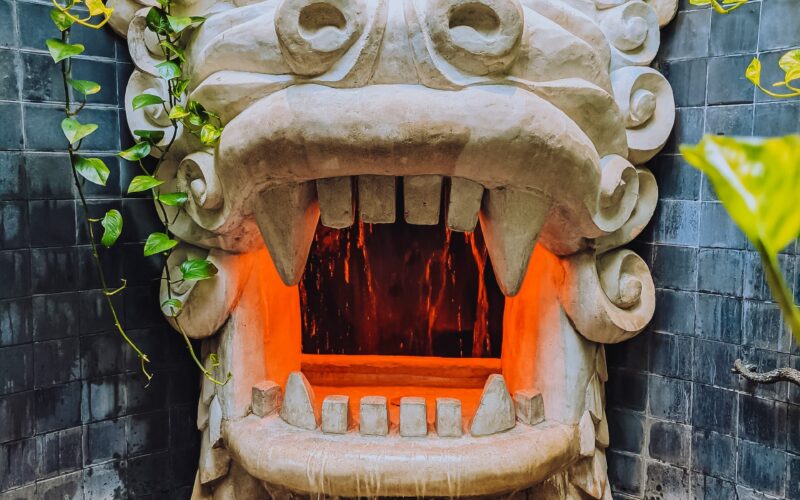In the pursuit of creating a serene and harmonious living environment, homeowners and interior designers are constantly exploring innovative ways to incorporate elements of nature into indoor spaces. One such element that has gained significant popularity in recent years is the indoor waterfall or water wall. With its soothing sounds, mesmerizing movement, and aesthetic appeal, an indoor water wall can transform any space into a tranquil oasis. In this article, we delve into the art of flow and explore the various benefits and considerations of incorporating indoor water walls, along with practical tips for integrating them seamlessly into your home.
1. The Power of Flow in Interior Design:
The concept of flow, inspired by the fluidity and balance found in nature, plays a crucial role in creating a harmonious and inviting living space. The introduction of an indoor water wall harnesses the power of flow, bringing a sense of tranquility and serenity into any room. Water has long been associated with therapeutic properties, and its presence can evoke a deep sense of calm and relaxation. By incorporating an indoor water wall, you invite the element of flow into your home, enhancing the overall ambiance and creating a soothing atmosphere.
2. Benefits of Indoor Water Walls:
Aesthetic Appeal
Indoor water walls serve as captivating focal points that can elevate the visual appeal of any space. With their elegant designs, cascading water, and interplay of light, they add a touch of luxury and sophistication to interiors. Whether your style is contemporary, minimalist, or traditional, there is a wide range of water wall designs available to complement your aesthetic preferences.
Relaxation and Stress Relief:
The gentle sound of flowing water has a remarkable ability to calm the mind and reduce stress. Indoor water walls create a soothing acoustic backdrop that masks unwanted noises, creating a serene environment ideal for relaxation, meditation, or even work. The presence of water can also help humidify the air, contributing to a healthier indoor atmosphere.
Improved Air Quality:
Indoor water walls act as natural air purifiers by trapping dust particles and releasing negative ions into the air. Negative ions help neutralize pollutants, allergens, and odors, resulting in cleaner and fresher indoor air. This not only benefits your physical health but also enhances the overall comfort and well-being of occupants.
Visual and Mental Stimulation:
The dynamic movement of water in an indoor water wall provides visual stimulation, captivating the senses and promoting mental well-being. Observing the cascading water can induce a state of tranquility and encourage mindfulness, offering a momentary respite from the demands of daily life.
3. Considerations for Installing an Indoor Water Wall:
Space and Size:
Before installing an indoor water wall, consider the available space and the scale of the wall. While water walls can be customized to fit various dimensions, it’s essential to ensure that the size is proportionate to the room. Oversized water walls in small spaces can overpower the area, while too small a water wall may fail to make the desired impact.
Material Selection:
Choosing the right materials is crucial for the longevity and aesthetics of your indoor water wall. Common materials include glass, acrylic, stainless steel, and stone. Each material offers unique visual characteristics, so consider the overall design scheme and desired ambiance when making your selection.
Maintenance and Water Source:
Indoor water walls require regular maintenance to keep them clean and functioning optimally. Ensure easy access to the water source for refilling and consider incorporating a filtration system to maintain water quality. Consulting with a professional during installation can help you design a system that meets your specific maintenance needs.
Integrating Indoor Water Walls Seamlessly:
Placement and Lighting:
Careful placement of your indoor water wall can significantly impact its visual impact and functionality. Consider positioning it in areas where it can be enjoyed and admired, such as the living room, entryway, or even the bedroom. Additionally, incorporating lighting elements around the water wall can enhance its beauty and create a captivating ambiance, especially during the evenings.
Complementary Décor:
To create a harmonious and cohesive space, ensure that the indoor water wall aligns with the overall décor of the room. Consider the colors, textures, and materials used in the surrounding area and choose a water wall design that complements these elements. This will help create a seamless integration that enhances the overall aesthetic appeal of the room.
Enhancing the Surroundings:
An indoor water wall can be further enhanced by integrating complementary features and elements. Consider adding greenery, such as indoor plants or a vertical garden, to create a vibrant and natural backdrop. Additionally, incorporating natural materials like stones or pebbles around the base of the water wall can add an organic touch, enhancing the overall appeal.
Privacy and Soundproofing:
Depending on the location and layout of your home, privacy and soundproofing may be essential considerations. If the water wall is placed in a shared space or near bedrooms, ensure that it is designed with appropriate sound insulation to prevent disturbances. Additionally, consider privacy options such as frosted or tinted glass to maintain a sense of intimacy while still enjoying the beauty of the water wall.
5. Maintenance and Care:
To keep your indoor water wall in optimal condition, regular maintenance and care are essential. Here are some key considerations:
Cleaning:
Regularly clean the water wall to remove any dirt or debris that may accumulate over time. Follow the manufacturer’s instructions for cleaning specific materials and components, and use appropriate cleaning agents to avoid damage.
Water Quality:
Maintain the water quality by regularly checking and balancing the chemical levels. Consult with a professional or follow the recommended guidelines to ensure that the water is clean and free from contaminants. It’s also important to regularly change the water to prevent stagnation and maintain freshness.
Inspections:
Periodically inspect the water wall, including the pump, pipes, and filtration system, for any signs of damage or wear. Address any issues promptly to avoid further complications and ensure the smooth operation of the water wall.
Conclusion
Incorporating an indoor water wall into your living space offers a unique opportunity to infuse the soothing and captivating qualities of flowing water into your home. By carefully considering the design, placement, and maintenance aspects, you can create a harmonious and serene environment that enhances the overall aesthetic appeal and promotes a sense of well-being. Whether you seek relaxation, visual stimulation, or improved air quality, embracing the art of flow through indoor water walls has the power to transform your home into a tranquil haven, where nature’s serenity is brought indoors. So, embark on this journey of creating a harmonious space and let the gentle flow of water guide you to a sanctuary of peace and tranquility within your own home.




